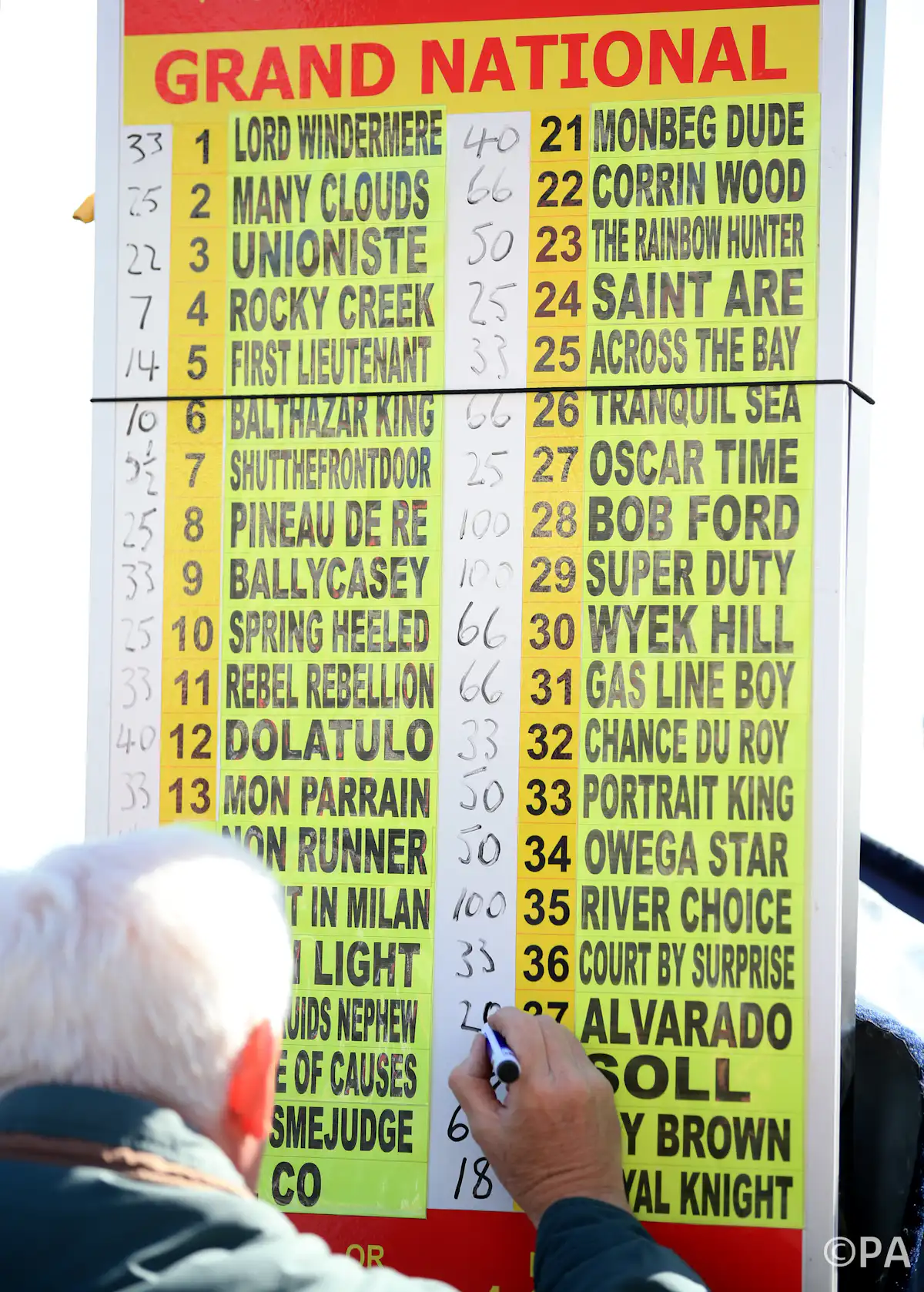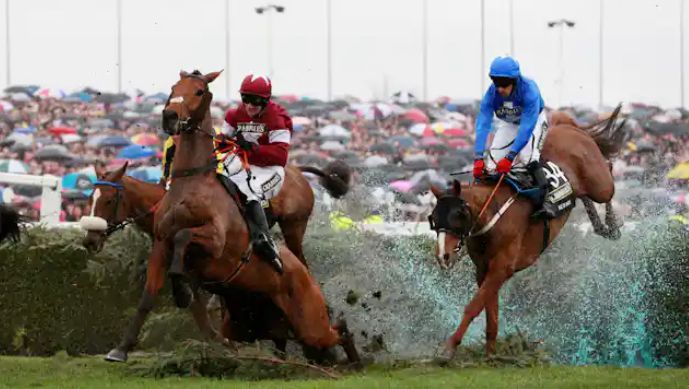The Grand National holds much more significance than being just a horse race. Held at Aintree, near Liverpool, this event attracts a global audience of over 600 million people in 140 countries. Its betting turnover surpasses that of any other horse race in the UK, including the Cheltenham Gold Cup. Bookmakers particularly benefit from this race, as the odds offered heavily favour them.
In its initial running in 1839, a horse named Lottery emerged as the winner of the Grand National. At that time, the race was a steeplechase where all participating horses carried the same weight. It took four years for the rules to be changed, introducing a handicap system that renders the race highly unpredictable in today's context.

Each horse participating in the Grand National is assigned a specific weight based on their past performance. Weaker-performing horses carry lighter weights, while those with stronger track records bear heavier burdens. This unique handicap system allows even casual bettors to place small wagers on longshot horses with odds as high as 100-to-1, as they believe they have a chance of winning. This adds to the excitement and thrill of watching the race unfold. It is estimated that around two-thirds of the adult population in the UK place bets on the Grand National, contributing to a total turnover of over £150 million for bookmakers.
One of the factors that make the Grand National so captivating is its history of sensational upsets. The most famous incident occurred in 1967 when a riderless horse named Popham Down unexpectedly veered into the path of the leading horses at the 23rd fence, causing chaos and collisions. Amidst the chaos, an underdog named Foinavon managed to navigate through the turmoil and emerged as the winner, evoking a mix of cheers and tears from the crowd. Those who backed Foinavon on the Tote, a pool betting system, received an unprecedented payout of 444-to-1. In 1984, the fence where Foinavon succeeded was renamed the Foinavon fence, further adding to the legendary status of the racecourse.
The Grand National's rich and varied history, encompassing events like the one mentioned above, contributes to the race's captivating allure. This, coupled with the large field size, formidable fences, and lengthy double circuit, makes the race immensely popular to both watch and place bets on. These elements combine to create an exciting and thrilling experience for spectators and bettors alike.

Every year, the Grand National produces its own unique and captivating stories. One of the most inspiring tales was that of the 1981 race, which was later depicted in the movie "Champions." Jockey Bob Champion and his horse Aldaniti made a remarkable comeback from serious illness and injury. Against all odds, they charged up the long final stretch and triumphed by a margin of four lengths.
However, not all stories in the Grand National have such a glorious ending. One of the most famous instances occurred in the 1956 race when Queen Elizabeth the Queen Mother's horse, Devon Loch, had a commanding lead on the final stretch. Suddenly, he leapt into the air in front of the royal box and fell on his stomach. The Queen Mother stoically remarked, "That's racing!" To this day, it remains a mystery what caused the incident. The phrase "to do a Devon Loch" has since entered sports journalism as a metaphor for a sudden and unexpected collapse when victory seems assured. The jockey that day, Dick Francis, went on to become a renowned writer of horse racing thrillers, and Devon Loch made a full recovery.
Not all horses are as fortunate, and the number of horses that have fallen at the tall National fences and been euthanised has influenced public perception of the race. Opposition to the event was particularly vivid in the 1993 "race that never was." Animal rights protesters invaded the course, causing a delay in the start. Amidst the confusion between the starter, officials, and riders, most jockeys set off, unaware that the race had been declared a false start. Flag-waving officials were disregarded by many riders who mistook them for protesters. The "winner," Esha Ness, is not officially recognised as a past champion but has become another name etched in the race's folklore.
No discussion of the Grand National would be complete without acknowledging the greatest champion of the race, Red Rum. In the 1973 race, Red Rum staged a remarkable comeback, overcoming a 30-length deficit to secure a late victory. This was followed by two more triumphs in 1974 and 1977, with second-place finishes in the intervening years. Affectionately known as "Rummy," Red Rum captivated the nation. Prior to his success, there were concerns about the future of the Grand National due to the possibility of the Aintree racecourse being sold for redevelopment. However, Red Rum's incredible performances dispelled those doubts, ensuring the race's enduring popularity.
What has truly solidified the Grand National's place is its ability to adapt to the changing times. The once treacherous fences, including the famous Becher's Brook, have been gradually modified to enhance safety. Consequently, the race has evolved from a gladiatorial spectacle to a beloved national and international event, cherished by fans around the world.

